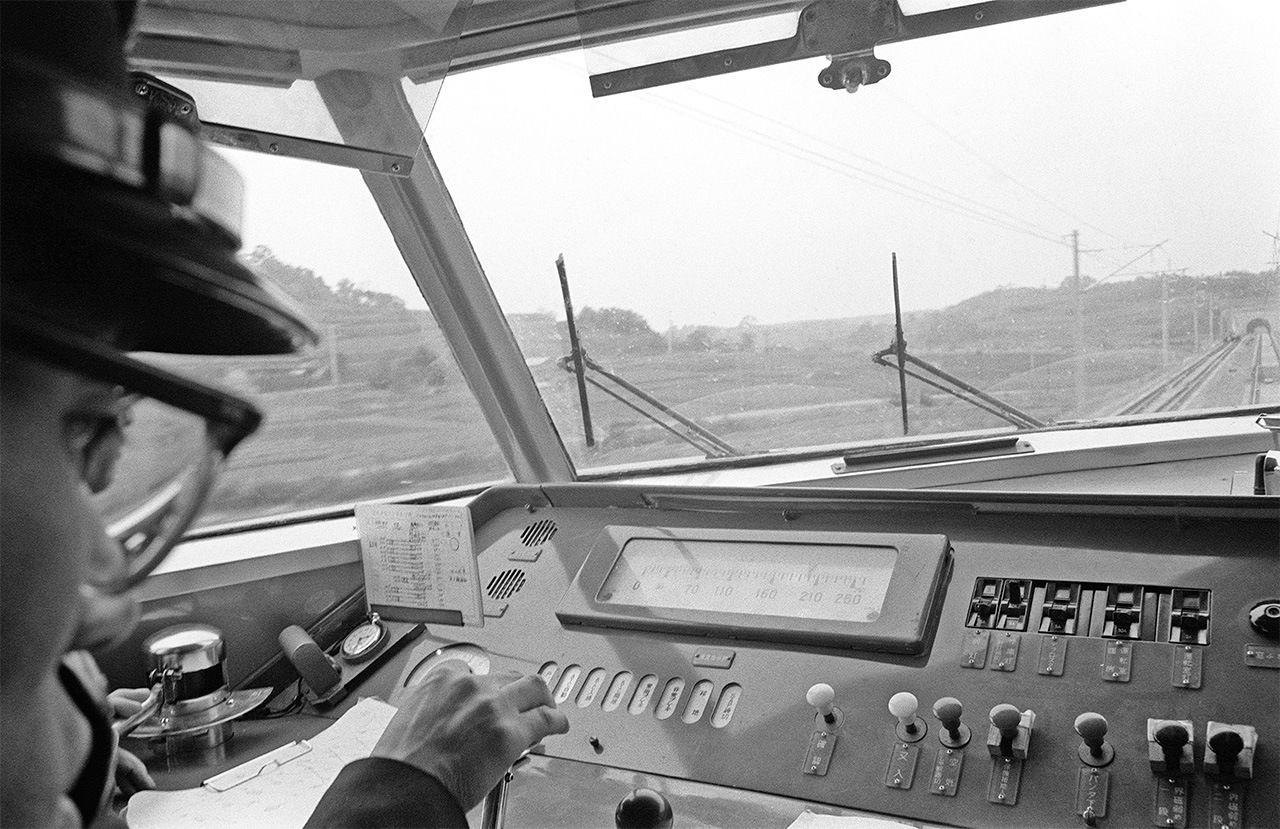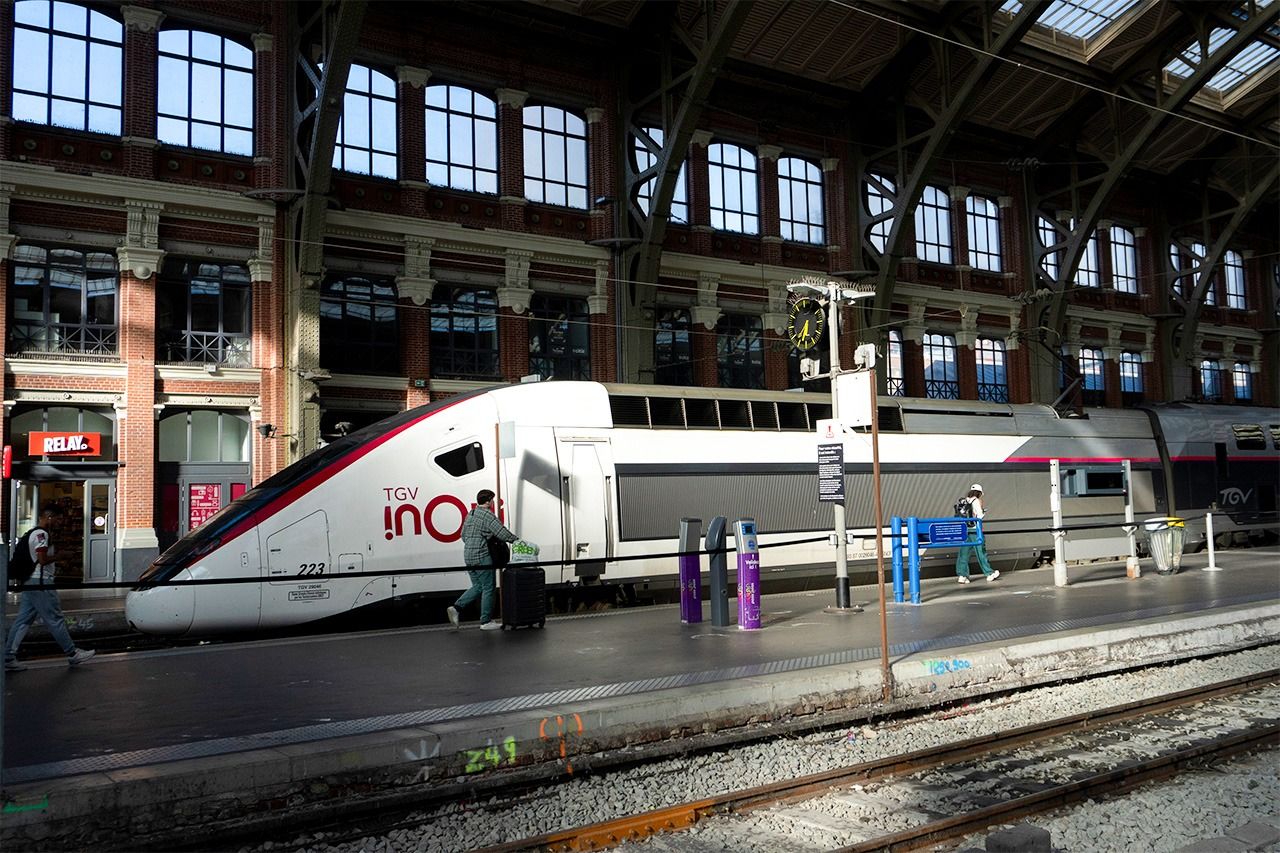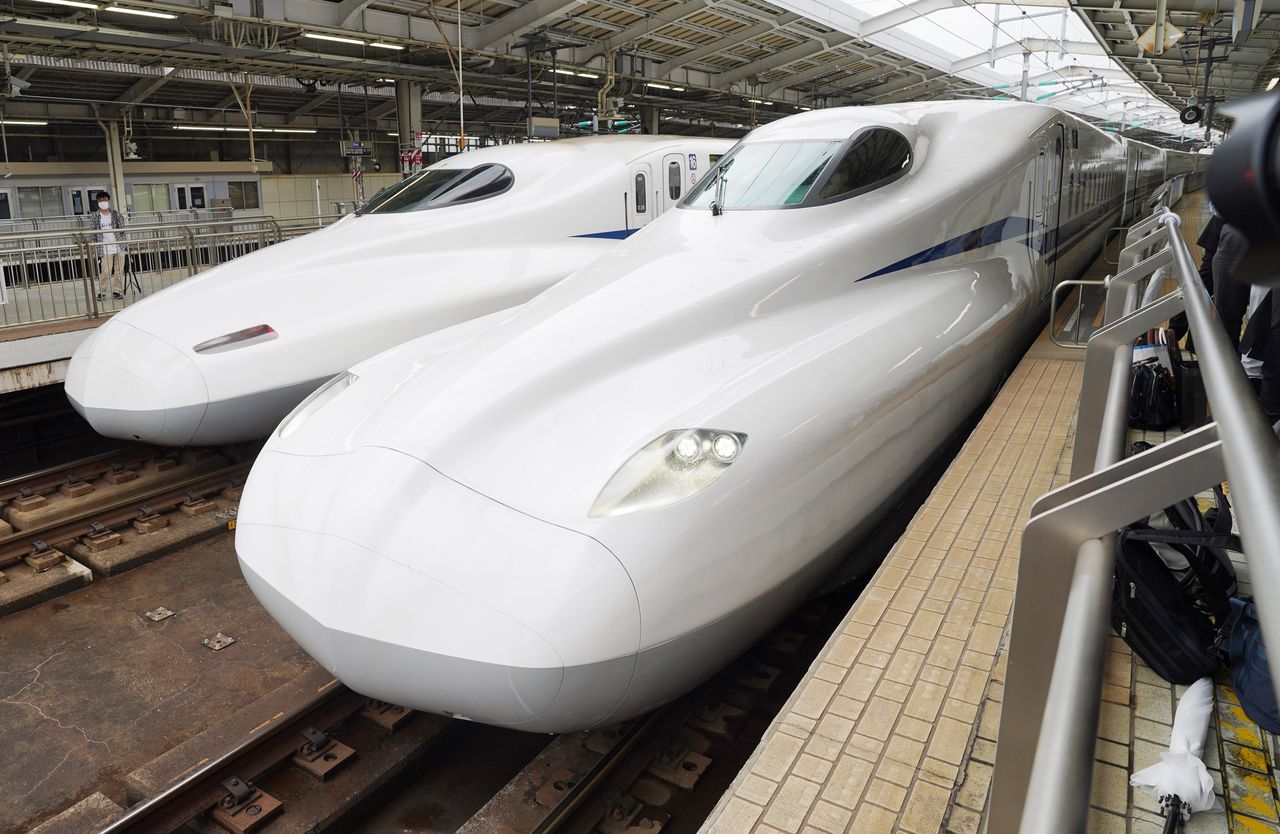
Japan’s Shinkansen: How Does It Stack Up Worldwide?
Society Economy- English
- 日本語
- 简体字
- 繁體字
- Français
- Español
- العربية
- Русский
Cutting-Edge Tech and Thorough Cost-Cutting
When the first line of the Shinkansen opened on October 1, 1960, people working in the global rail industry raised a collective cry of surprise.
The top speed of the fastest train on the rails of the Japanese National Railways, what is now Japan Rail, was 110 kilometers an hour. The standard gauge in Japan was 1,067 millimeters, nearly 37 less than the Western standard of 1,435, making it immensely difficult for a train to exceed 200 kilometers an hour on conventional rail. Despite that fundamental difficulty, JNR managed in one stroke to nearly double its fastest trains to a maximum speed of 210 kilometers an hour when it created the Shinkansen, using almost entirely self-developed technology.
The world also took note as the Tōkaidō Shinkansen attracted scores of riders and managed to achieve economic success, as well. Japan had no choice but to install new rails suited to the massive speed increase, at a construction cost much greater than that of conventional rails. The overall construction costs were around ¥380 billion—which adjusted for inflation comes to around ¥1.8 trillion in today’s money—for 515.4 kilometers of rails. That is a per-kilometer cost of about ¥740 million, or ¥3.6 billion in today’s money. The initial investment was enormous, which required thorough rationalization and efforts at cutting operating costs.

The Shinkansen underwent repeated test runs in Kanagawa Prefecture in 1962 on its way to starting normal operation. (© Jiji)
For example, a Shinkansen between Tokyo Station and Shin-Osaka Station had only one driver, something unheard of for conventional rail over journeys of that distance. That network had no unified system of switches or signals because the connection between the capital and Kansai was built piece by piece out of many little sections, meaning that any trip on those local railways would require several driver changes along the way.
The Shinkansen’s cutting edge technology and rationalization meant that about half of the Tōkaidō Shinkansen’s income went to covering expenses. All the lines that opened later inherited that same mindset. There are sometimes those who lament that “Shinkansen trips are all somewhat dull,” but that is directly due to the train network’s ultimate goal of providing high speed and safe travel at reasonable prices. One could say that the true essence of the Shinkansen is its ability to maintain profitability as a high-speed rail service despite the enormous construction costs.
Japan’s Strengths and Advantages
As time has passed, the definition of “high-speed rail” has changed. Now, the standard for a high-speed train running on designated track is 250 kilometers an hour and over, while a train running on improved conventional track must run 200 kilometers an hour or over to qualify. The sphere once ruled by the Shinkansen alone has seen new entrants as other nations have created their own high-speed rail lines. It is no longer a club with a membership of Japan alone.
The world’s second dedicated high-speed rail line opened in 1981 with the French TGV, or Train à Grande Vitesse. The idea spread through Europe in the 1990s, and then Asia, China in particular, began following suit in the 2000s. Indonesia opened its own high-speed rail line in 2023. This class of train has become a global standard, now, but there are still relatively few nations that are developing and building their own technology for cars, rails, and equipment. There are essentially three groups of high-speed rail developers: Japan; European Union nations like France, Germany, and Spain; and China.

A TGV stopped at Gare de Lille-Flandres in northern France. Taken on August 8, 2024. (© Antoine Boureau/Hans Lucas via Reuters Connect)
So, where does Japan’s Shinkansen stand among the world’s high-speed trains? Does it still surpass any of the other countries’ offerings?
To answer, let us look back on Indonesia’s high-speed rail project. Japan, which had entered bidding for the project, offered a report from the Japan International Cooperation Agency, the “Feasibility Study for Jakarta-Bandung High-Speed Railway Project,” in May 2015.
Within the report, a section comparing high-speed railways around the world put the Shinkansen up against France’s TGV, Spain’s AVE, China’s CRH, and Korea’s KTX. It concluded, “the Shinkansen is the most suitable system for Indonesia because it is well suited to the climate and physical conditions (such as earthquakes and rain), runs with reasonable energy consumption, and has a high level of passenger comfort.”
The sales points that Japan offered for its system was the relative power requirement and car weight per passenger, the wider seat pitch for passengers, resistance to rain, and performance over steep sections. In each of these fields, Japan either excelled or tied for first with other nations. The Shinkansen succeeds in efficiently moving large numbers of people in a large space and resists poor conditions. These are the strengths and unique characteristics of Japan’s high-speed rail offering.
Japan’s proposed example, based on E5 rolling stock run as Hayabusa on the Tōhoku Shinkansen, uses 13.1 kW per passenger, with car weight at 0.62 metric tons per head. The TGV runs at 26 kW and 1.18 tons; the AVE at 22.0 kW and 0.89 tons; and the KTX at 24.2 kW and 1.11 tons. The E5 Hayabusa comes in well below the offerings from every other entry, an enormous improvement.
High-Speed Railways Around the World
| Output/Capacity | Weight/Capacity | |
|---|---|---|
| Shinkansen (Japan) | 13.1 kW | 0.62 t |
| CRH (China) | 15.8 kW | 0.76 t |
| TGV (France) | 26 kW | 1.18 t |
| AVE (Spain) | 22 kW | 0.89 t |
| KTX (South Korea) | 24.2 kW | 1.11 t |
All values are per passenger.
Source: JICA “Feasibility Study for Jakarta-Bandung High-Speed Railway Project”
It must be said, though, that the Shinkansen has no decisive superiority to other high-speed rail options. Customers may not need to meet the same demand for large-scale transport as Japan’s heavily used bullet trains, so they can use smaller rolling stock which can run on conventional lines to reduce budgets and remain profitable.
The comparison also shows how China’s high-speed rail is neck and neck with the Shinkansen. With per-passenger output of 15.8 kW and car weight of 0.76 tons, it is difficult to say the technical specifications are markedly inferior to Japan’s. The need for China, with its enormous area and population, to enhance its transportation capabilities is clear from the data. In my own research, I found that there were 480 high-speed trains running the Shanghai to Nanjing route every day. That’s more than the roughly 450 daily trains on the Tōkaidō Shinkansen line.
In the end, Indonesia’s decision fell to factors beyond the rolling stock capabilities. China offered to forgo loan guarantees to the Indonesian government, and thereby won the bidding war. The lesson for other countries, including Japan, was that to successfully export Shinkansen technology will require a national strategy with governmental support, because competition on pure technical merits is difficult under such conditions.
Environmental Measures Worth Celebrating
Even so, the worry that China’s high-speed rail will soon overtake the Shinkansen and Japan’s technological superiority will disappear is unfounded. Japan’s particular nature of a relatively small landmass with a large population has resulted in extremely strict standards related to noise and vibration, and its environmental performance is held to a level beyond what any other high-speed rail system can met.
In Japan, noise levels in residential areas must be no higher than 70 decibels, roughly the same as a vacuum cleaner, and in industrial areas no higher than 75 decibels, about the level of a bowling alley. For vibrations, regardless of area they must be held about the equivalent of an intensity 2 earthquake on Japan’s quake scale, “Perceptible to most people indoors.”
In addition to sound and vibration proofing installed in homes near rails, sound and vibration measures also include a wide variety of technology built into and along the tracks. To reduce vibrations, for example, the rails themselves have been made harder and sturdier, and they are welded to eliminate seams at joints. Drooping in the overhead powerlines can also generate noise, so efforts are ongoing to stretch heavier lines ever tighter.

An N700S Shinkansen stopped at JR Shin-Osaka Station, with an N700A in the background. Taken June 13, 2020. (© Jiji)
Even the somewhat “awkward” shape of the Shinkansen, when compared to the express trains of other nations, has a reason. The nose of the Shinkansen has evolved from a stylish curved cone shape into a low, streamlined shape that is nearly half as long as the car itself. The result is a great reduction in something called “tunnel boom,” which is a loud explosive sound caused by air being pushed out of tunnels by the Shinkansen traveling at high speed. The elegant covers installed around the pantograph were designed to muffle the sound of the pantograph as it cuts through the wind, believed to account for half of the Shinkansen’s noise pollution.
One cannot say that the world is full of praise for such measures. Such high standards for sound and vibration countermeasures are excessive for many countries and are seen as an unnecessary cost when importing and adopting the Shinkansen. However, if predictions are true that high-speed rail can contribute to population growth and bring about beneficial changes in the shape of metropolitan areas, there is no doubt that adopting systems to reduce noise and vibration pollution from the start is a rational choice. There will surely come a day when the Shinkansen’s environmental measures will have their time in the sun.
(Originally published in Japanese. Banner photo: The Tōkaidō Shinkansen opening ceremony at Tokyo Station on October 1, 1964. © Jiji.)

